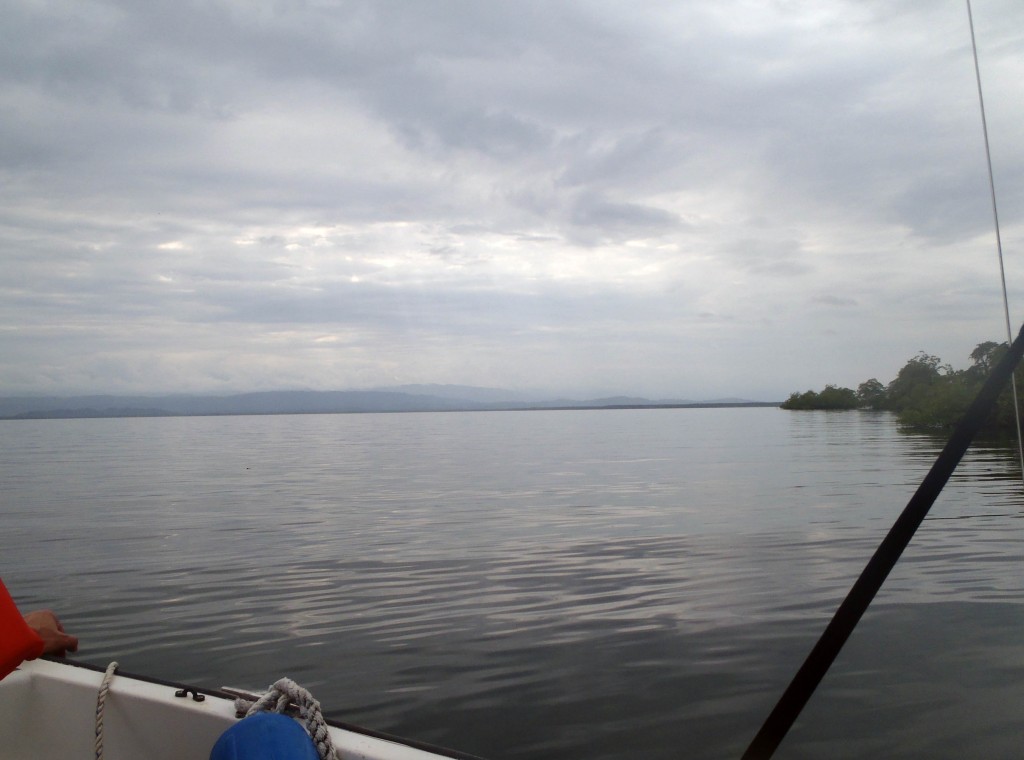by Katrina Lohan
After spending less than a week at the Naos Laboratory, Kristy and I headed to Bocas del Toro with collaborator Mark Torchin from STRI and my advisor, Greg Ruiz from SERC. The flight from Panama City to Bocas del Toro is only about an hour, so we left on the first flight out in the morning and arrived at the station in plenty of time to put in a full day’s work. Though tired from getting up early to make the flight, there is nothing that wakes me up faster than a chance to get in the water!

Reconnaissance cruise in Bocas del Toro, on the Atlantic side of Panama. Since the canal opened almost 100 years ago, species as well as cargo have been able to cross the waterway between oceans. (Kristina Hill)
After settling in, we decided to do some reconnaissance in hopes of determining at least one potential sampling location. Kristy, Greg, Mark and I headed out on one of the marine station’s boats to find oysters. We spent most of the time searching mangrove roots attempting to determine what species were present in the different locations we were surveying. While driving around the mangroves is nice, I particularly enjoyed the reconnaissance that involved snorkeling. While snorkeling, I was able to check out potential pathogen reservoirs in addition to noting the bivalve species in the area. So many research options and so little time!
More stories from Panama >>

